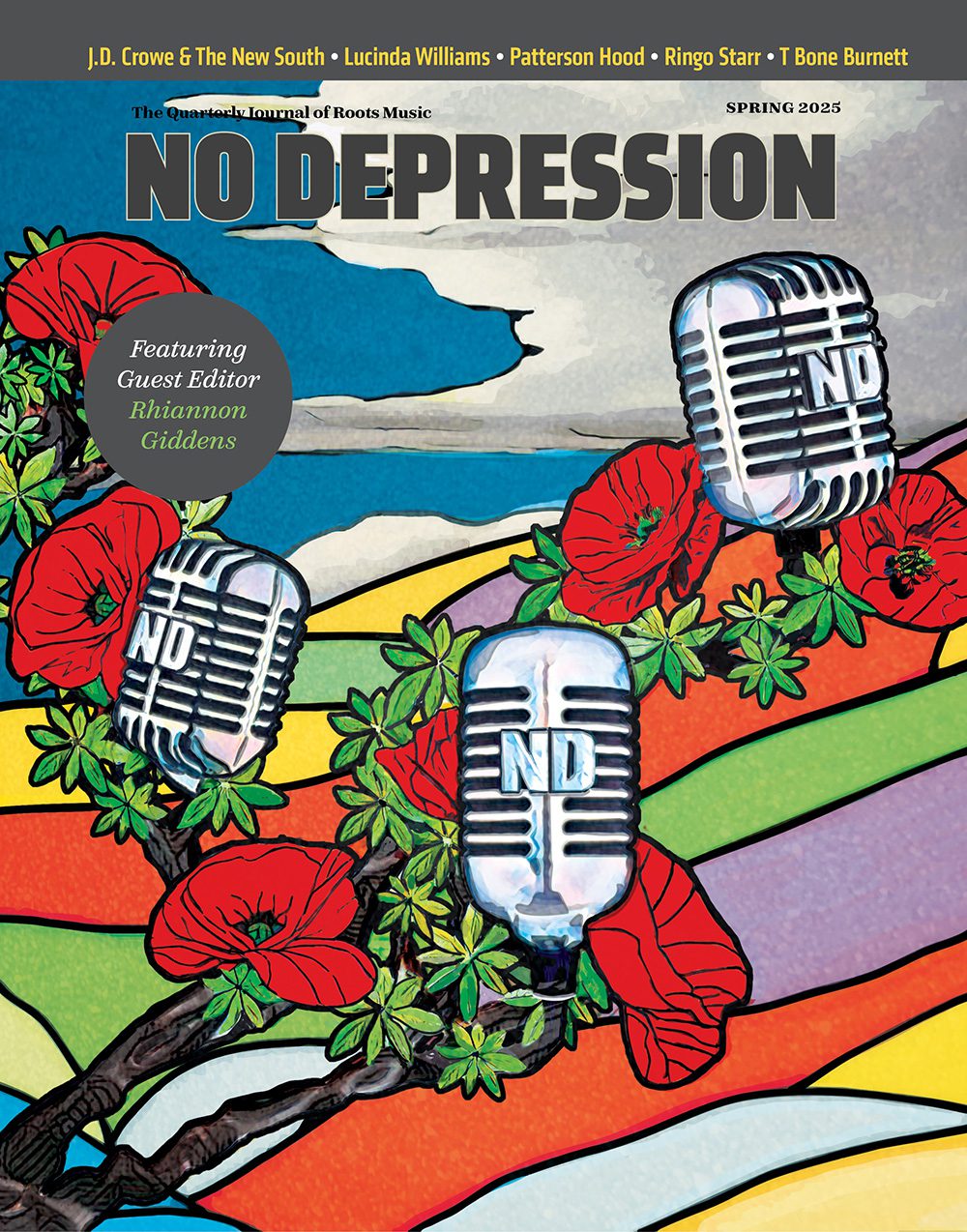The Decemberists – Phases and stages
Even though Picaresque was released after that EP, most of the songs on Picaresque predated The Tain, which was composed in a furious round of writing over just a few days, for limited release on the Spanish label Acuarela. “I feel that this record is really the follow-up to The Tain,” says Meloy, “while Picaresque is a follow-up to Her Majesty, The Decemberists.”
Between the skeletal sentiments of “The Crane Wife 3” and the widescreen grandeur of “The Island”, other songs emerged that sat somewhere in the middle, yet still sounded like nothing previously attempted by the quintet. The group jokes that “The Perfect Crime #2” teeters on the cusp of Doobie Brothers territory, but the actual model was Talking Heads. “The idea was to do it Remain In Light style, like Eno did it — track the drums first and then just build everything else on that, and have all the elements controlled by mutes,” Meloy says. “There were a million ways to go about it.”
Because co-producer Chris Walla knew that commitments with his own band, Death Cab For Cutie, would limit the amount of time he could spend in the studio, he suggested bringing in an additional producer. Consequently, although Walla had heard demos and submitted preliminary suggestions and a track sequence, the first two weeks of studio time were supervised by Tucker Martine (Jesse Sykes & The Sweet Hereafter, Wayne Horvitz, Laura Veirs).
“That was great,” Meloy says. “Not only was Tucker able to get his feel for the studio, but also he could sit in on rehearsals and take little notes and be an objective voice. And any time we got stuck, he would be quick to offer an opinion, which was also really helpful.”
Since the songs were new, even incomplete in some cases, Tucker and Walla wound up being an integral part of shaping the overall sound. Having well-rehearsed arrangements, as on previous Decemberists discs, might have accelerated recording, but it limited experimentation.
“But if you were just making up your part on the spot, and Chris or Tucker said, ‘How about trying this instead?’ you weren’t offended,” Conlee observes. “You didn’t go, ‘Oh, but I’ve been playing it this way for six months.’ I didn’t have any attachment to much of anything, so the music was much more moldable.”
“Also,” Meloy adds, “I feel like the body of work, the songs, were weird enough and felt uncharacteristic just enough that I was able to give away a lot of the creative control in that kind of area.”
Still, sometimes trying a new tack was uncomfortable. “I wanted to play accordion on more songs, but, it’s funny, both Tucker and Chris are not huge fans of the instrument. And I asked Tucker about it: ‘Do you just not like the instrument?’ And he said, ‘I just don’t want it to be the first choice that we always go for.’ So I ended up playing pump organ on two songs, which was great.”
The nature of the sessions also suited multi-instrumentalist Funk. “It’s really good to let down your guard, put down your ego, and let the song mature and grow,” he says. “And be open. That’s the big thing: Being open to trying all sorts of things.”
The producers didn’t insist on Meloy altering his vocal approach, yet his singing is audibly more subtle on The Crane Wife. It’s not quite as gritty as back in the Tarkio days, but it’s less arms-wide-open than on the last two Decemberists albums, for sure.
“Listening to the new record, there are a lot more dynamics,” Meloy says of his delivery. “I’m trying to sing more softly on some stuff, which is what I did on Castaways & Cutouts. On Picaresque and Her Majesty, there is a lot of histrionics and belting. On this one, I wanted to get back to exploring more of a range.”
In 2005, on the eve of a big national tour, the Decemberists’ van was burglarized, and their equipment stolen. It was a horrible experience; they still look pained when the subject is raised. “We had all this new gear, and road cases, all this cool stuff we were going to roll into the clubs…and look like a real band,” Meloy remembers.
Instead, he ended up walking onstage at the Showbox in Seattle carrying a guitar borrowed from his uncle and a shopping bag filled with random cables and tuners. Moen’s drum kit was a Frankenstein’s monster of bits and pieces from other sets.
“We still got up and played the show,” Meloy says. “And it was a bit of an epiphany, where you realize your own vanity. How are those road cases necessary? Why feel embarrassed about carrying your cables in a blue plastic bag? It’s all just playing music. And realizing that, even if you get torn down to just your basic building blocks, you can still play a show.”
For The Crane Wife, the Decemberists willfully reassembled those same blocks in new ways, and emerged with maybe their best record yet. With the muscle of a major label backing them, they just might be the Next Big Thing, although it seems unlikely they would behave like it. They know the shortcomings of archetypes, too. The fate of the Rock Star is just as predictable as that of Dickensian orphans and slasher-flick bimbos.
And why get hacked to death by a psycho in a hockey mask, or shoe-horned into another episode of Behind The Music, when there are so many more interesting stories to tell instead?
Seattle-based ND contributing editor Kurt B. Reighley wrote the Danielson feature in issue #63. Prior to becoming a freelance writer, he studied classical music and performed extensively in amateur theater productions. He prefers the novels of Wilkie Collins over those of Charles Dickens any day.




